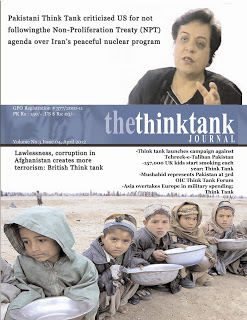The recent Gaza conflict has thrust the European Union into a quagmire of conflicting perspectives on its stance towards Israel.
The EU’s response to the Israel-Hamas conflict has exposed deep divisions among its 27 member states, casting a spotlight on the challenges of crafting a cohesive foreign policy in the face of complex international crises. In this article, we will delve into the rifts within the EU and explore the implications of this division.
A Divided Europe: The Israel-Hamas Conflict
The Israel-Hamas conflict, a recurring flashpoint in the Middle East, has proven to be a litmus test for the European Union’s efforts to present a united front on international issues. This divisive issue has highlighted stark differences in national interests and approaches among EU member states.
Pro-Israel and Pro-Palestinian Camps: As the conflict escalated, it became evident that some EU countries leaned towards a pro-Israel stance, emphasizing Israel’s right to self-defense, while others expressed deep concern for the protection of Palestinian civilians in Gaza. This division not only undermines the EU’s influence in the Middle East but also has the potential to divert attention and resources from other critical matters, including supporting Ukraine’s self-defense efforts.
Global South’s Perspective: The EU’s response to the Israel-Hamas conflict has also raised concerns among countries in the so-called “Global South.” These nations, disheartened by the EU’s stance on the Middle East crisis, may become less inclined to support the European position on other international issues, such as Ukraine.
Challenges and Implications
The division within the European Union regarding the Israel-Hamas conflict presents significant challenges and implications:
Diminished EU Influence: The EU’s inability to present a unified front on such a high-profile international issue diminishes its influence in the Middle East and on the global stage. In a region as complex and volatile as the Middle East, a cohesive stance can be a powerful tool for diplomacy and conflict resolution.
Resource Allocation: Disagreements among member states can hinder the allocation of funds and resources for critical foreign policy endeavors, including support for Ukraine. The division risks weakening the EU’s ability to respond effectively to international crises.
Regional Influence: The rifts in the EU’s foreign policy can affect its regional influence and partnerships. It may strain relations with key actors in the Middle East, impacting trade, security, and cooperation in the region.
Global Standing: A divided stance on an issue as sensitive as the Israel-Hamas conflict can impact the EU’s reputation on the global stage. It raises questions about the EU’s credibility as a mediator and diplomat in international conflicts.
Challenges in EU Foreign Policy
Divergent National Interests: The EU’s 27 member states often have differing perspectives on international issues. As demonstrated by the recent Israel-Hamas conflict, some countries lean towards a pro-Israel stance, while others emphasize the protection of Palestinian civilians. These divergences not only diminish the EU’s influence but can also impact its ability to provide support to nations like Ukraine.
Internal Political and Social Divisions: Several member states, including France, Spain, and the UK (which still plays a vital role in European foreign policy), grapple with domestic political divisions that influence their foreign policy positions. For instance, in France, left-wing opposition leader Jean-Luc Mélenchon’s stance on Israeli policies has sparked controversy, while Spain’s pro-Palestinian leanings present a challenge for its prime minister, Pedro Sánchez. Even in the UK, opposition leader Keir Starmer faces criticism from within his party on the Israel-Hamas conflict.
Institutional Disarray: The Lisbon Treaty was expected to enhance the EU’s foreign policy by creating a permanent president of the European Council and an external action service led by a foreign policy chief. However, these arrangements have sometimes faltered. Disagreements between EU commissioners and national governments have become evident, leading to incoherence and undermining the EU’s foreign policy initiatives.
Lack of Hard Power: The EU’s ability to exert influence in foreign affairs is limited by its lack of hard power and regional clout. For instance, in the Azerbaijan-Armenia conflict, EU diplomatic efforts could not prevent Azerbaijan from retaking Nagorno-Karabakh. Additionally, the EU’s growing dependence on Azerbaijan as an energy supplier has curtailed its influence in the region.
Inadequate Defense Expenditure: While EU governments have increased defense spending since the Russian invasion of Ukraine, many European NATO members still fall short of the alliance’s 2% GDP target. This underinvestment in defense has implications for the EU’s capacity to protect its interests and respond effectively to international crises.
Opportunities in EU Foreign Policy
Energy Security: The EU has made strides in reducing its dependence on Russian oil and gas. This shift in energy security enhances the EU’s resilience and reduces its vulnerability to external pressure. It allows the EU to pursue a more independent foreign policy agenda.
Countering Disinformation: The EU is becoming more adept at countering disinformation from foreign actors. This capability is essential in today’s information warfare landscape and strengthens the EU’s ability to defend its interests.
Strategic Compass: The implementation of the “Strategic Compass” provides a framework for the EU to bolster its capabilities in cyber defense, intelligence, space, and maritime security. It also enables the rapid deployment of troops for crisis management. This initiative enhances the EU’s capacity to respond to evolving security challenges.
Qualified Majority Voting: The EU is considering a transition from unanimity to qualified majority voting in foreign policy decisions, potentially eliminating the ability of a single country to block decisions. This change could make EU foreign policy more efficient and responsive.
Conclusion
The Israel-Hamas conflict has laid bare the challenges and complexities of crafting a common foreign policy within the European Union. The division within the EU on this issue not only weakens its influence in the Middle East but also has wider implications for global diplomacy and the EU’s credibility as a unified actor in international affairs. As the EU continues to grapple with the consequences of this division, finding common ground and presenting a coherent foreign policy stance will remain a pressing challenge for the bloc.
The European Union faces a complex landscape in its pursuit of an effective common foreign policy. While challenges such as divergent national interests, internal divisions, and institutional issues persist, there are also opportunities in energy security, countering disinformation, and strengthening defense capabilities. The EU must navigate these complexities to achieve a more unified and influential foreign policy, contributing to its evolving role as a geopolitical player in an ever-changing global arena.




